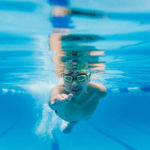Back in October, I wrote a blog post about a surprise: it turns out that students REMEMBER STUFF BETTER when they take photos of lecture slides.
For several reasons — including common sense — I would have predicted the opposite. In fact, so did the researchers (led by Dr. Annie Ditta) who arrived at this conclusion.
But when Team Ditta ran their study and crunched their numbers, they found that slide photos improved students’ recall.
Having written that pro-photo blog post, I was genuinely alarmed to see a tweet from Prof. Dan Willingham — one of the greats in this field. He describes taking photos as “a terrible way to take notes.”
And Dr. Willingham should know. He’s just written a book focusing on study strategies — including note-taking.
What’s going on here? Have I given you terrible advice?
It turns out: Professor Willingham’s advice derives from this study, published in 2021 by Wong and Lim.
My blog post came from the Ditta study, published in 2022.
How do we explain — and choose between — studies that ask the same question and arrive at entirely different answers?
Untangling the Knot
Step 1: don’t panic.
It might seem that contradictory results explode the field of psychology. If THIS study shows “yes” and THAT study shows “no,” then the whole enterprise looks foolish and broken.
But here’s the thing:
Psychology is complicated.
Teaching and learning are complicated.
PEOPLE are complicated.
When psychology researchers study people who are teaching and learning, they’re studying FANTASTICALLY complicated topics.
For that reason, psychology researchers regularly produce contradictory results. That’s just how they roll.
And for that reason, no one study answers a question for good. To quote Dr. Willingham once again: “One study is just one study, folks.”
We should look not for one study to answer a question definitively, but for clusters of studies to point in a consistent direction.
If 10 studies show YES, and 2 studies show NO, and 2 more show CONFUSION — well then, “yes” strikes me as a plausible conclusion. (At least for now.)
Start Here
How can we know if most researchers have arrived at Wong’s 2021 conclusion (“photos = bad”) or at Ditta’s 2022 conclusion (“photos = good”)?
Step 2: Get curious.
Replace advocacy (“I know for sure that photos are good/bad!”) with curiosity (“I wonder what I’ll find? This should be fun…”)
For my curiosity projects, I rely on three websites: scite.ai, connectedpapers.com, and elicit.org. *
They all have different approaches and yield different kinds of results. And, they all help answer the question: “do we yet have a cluster of studies that mostly point to the same conclusion?”
So, what did I find when I asked those resources about the Wong (“photes = bad”) study?
When I looked on connectedpapers.com … it identified exactly ZERO other studies that asked questions about taking photos of lecture slides.
When I asked elicit.org a question on the topic … it came up with nothing.
Scite.ai did identify one other study responding to Wong. Sure enough, it’s the Ditta study: “photos = good.”
So, unless I’m missing something, we just don’t have much research on this topic. We can’t know where a “cluster of studies” might point because we don’t have anything remotely like a cluster.
Getting Specific
We’ve got at least one more research avenue to pursue:
Step 3: explore the boundaries.
Let’s imagine for a minute that Wong did her study with 3rd graders, and found that photos = bad; and (still imagining), Ditta did her study with college students, and found that photos = good.
In that case, we could reasonably imagine that they got different results because they studied participants in different grades.
Or (more imagining) maybe Wong studied photos of slides during a music class, and Ditta studied photos during an art history class.
Here again we could make a reasonable guess: slide photos will help in some disciplines (art!) but not others (music).
Researchers call these “boundary conditions”: as in, “this finding applies to people within these boundaries, but not outside them.”
Potential examples: a conclusion applies to …
… math class but not history class, or
… a Montessori school but not a military academy, or
… for dyslexic students, but not for neurotypical readers, or
… in Icelandic culture, but not Brazilian culture.
You get the idea.
When we look at Wong’s and Ditta’s studies, however, we find they’re very similar. Adults watch short-ish videos, and do (or don’t) take photos or notes.
The studies differ slightly — Wong looks at mind wandering as an important variable, for instance — but not enough to draw strong conclusions.
At this point, neither our online resources nor our exploration of boundary conditions gives us any reason to prefer one study to the other.
End at the Beginning
No matter how the journey goes up to this point, we always end with …
Step 4: Look to your experience, and your colleagues.
In other words: we teachers should be curious (step 2) and informed (step 3). And, we always ultimately rely on our own judgement.
In this case — in my view — we simply don’t have a good research consensus to push us strongly one way or another. So, relying on my experience, here’s the policy I would follow with my 10th grade English students:
You may take pictures of photos or complex diagrams — anything that would be hard to put into words.
However, if you can put the material into words, I’m going to ask you to do so.
Why?
Because the more time you spend processing the information, the likelier it is you will understand and remember it.
This policy would, of course, have nuances and exceptions. (E.g.: dysgraphic students shouldn’t have to write as much.)
I want to emphasize, however, that your policy needn’t resemble my policy.
If you teach different kinds of students, or teach in a photo-friendly discipline (art history!), or if your experience tells you something else…you should follow your own wisdom.
TL;DR
Should students take photos of slides as a way to remember the material?
At present, we have so little research on the topic that it really can’t answer that question — ESPECIALLY because the studies contradict one another.
Instead, we should rely on our research-informed judgement.
* As I’ve written elsewhere, I would not use ChatGPT for this kind of inquiry. In my first forays into that world, the website simply MADE UP citations. Ugh.
Ditta, A. S., Soares, J. S., & Storm, B. C. (2022). What happens to memory for lecture content when students take photos of the lecture slides?. Journal of Applied Research in Memory and Cognition.
Wong, S. S. H., & Lim, S. W. H. (2021). Take notes, not photos: Mind-wandering mediates the impact of note-taking strategies on video-recorded lecture learning performance. Journal of Experimental Psychology: Applied.




